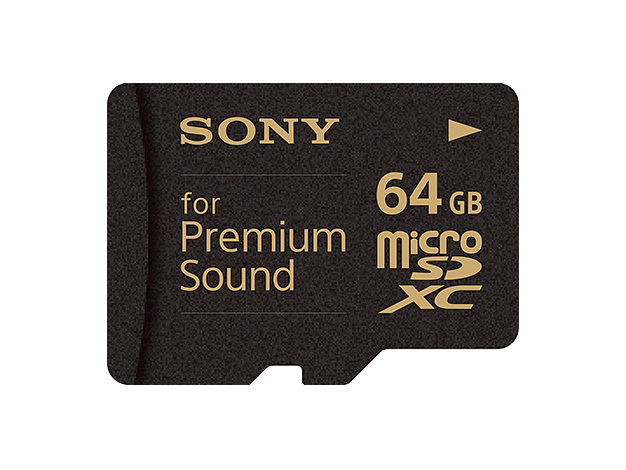Sony has released a special memory card for pure music sound

The news of new memory cards for connoisseurs of high-quality sound has already spread around the world. New memory cards promise to improve the signal-to-noise ratio at the player output at a cost of $ 160 instead of $ 30 for a similar non-audiophile memory card. Since On the memory card, the sound is stored in the figure, and reading from the memory is asynchronous, then the news caused a violent reaction in the style of “another divorce of rich buratin.” But what if you dig deeper? What if there is a lot about this new memory card, and the laughter in the news is limited to the concept of “mp3 is no worse than flac”?
Sony is a large company focused on a wide range of consumers with a huge staff. And unfortunately, marketers are holding PR, not engineers. Engineers provide data to marketers, and they are trying to simplify it to the point where information on the one hand is understood by them, and on the other they should be understandable to the average man in the street. After all, to answer any question to the marketing department and the less introductory information, the fewer questions.

')
In the case of the Sony SR-64HXA, marketers clearly did not understand what kind of product they had and the information was reduced so much that it was difficult to figure out even the professionals and there was a huge field for various guesses.
Dry baseline data:
- With the Sony SR-64HXA, there will be less noise when used in a portable player (such as the Hidizs AP100 , iHiFi 960 Pro ).
- There is a graph (in the form of a spectrum) that demonstrates noise reduction without specific numbers and frequencies.

Based on the data presented, you can restore the basic principle of noise reduction.
Any memory card, like a logic chip, working with a digital stream is a set of switchable keys. During switching, the total resistance of the microcircuit or memory card changes. The power supply is usually connected to a large number of chips, and each has its own resistance. The bottom line is that when a chip's resistance changes, the voltage level in the whole circuit changes. This change is usually referred to as noise from a particular chip. With "noise" within acceptable limits, no problems occur for logical elements. But the same power source serves the analog part - the DAC and headphone amplifier, where the instability of the power manifests itself in noise and distortion. Remember how much you can hear by connecting headphones to the built-in sound card, especially a laptop!
In serious stationary systems, power supply for digital and analog circuits is done separately (different transformers, effective stabilizers, etc.), which is difficult to do in a portable player. And it is for Sony players that it offers a memory that is less “noisy” in terms of power.

Unfortunately, the information content of graphics from Sony leaves much to be desired, to make a prediction of how much cleaner the SR-64HXA is in comparison with other memory cards and whether this is a problem for all portable players or only their new flagship NW-ZX2. Here you can only wait for the appearance of devices on sale and tests in the technical laboratory Reference Audio Analyzer.
SR-64HXA can only be recommended at this time to owners of top players, and not from the position that the sound will definitely become cleaner, but simply to soothe the soul, that the world's best audiophile memory is used.
The author Kuznetsov Roman romanrex
Source: https://habr.com/ru/post/365173/
All Articles